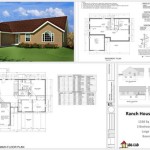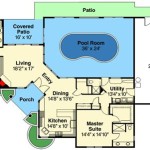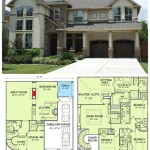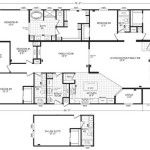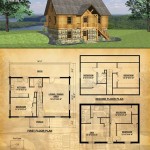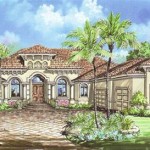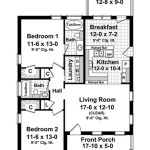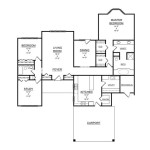Lake House Plans for Narrow Lots: Maximizing Space and Views
Building a lake house on a narrow lot presents unique design challenges. Limited width requires careful planning and creative solutions to maximize living space, capture scenic views, and maintain functionality. Specific lake house plans tailored for narrow lots are essential to achieving a desirable and comfortable retreat. This article explores the considerations, designs, and strategies involved in creating effective lake house plans for narrow properties.
Understanding the Constraints and Opportunities of Narrow Lots
Narrow lots, by definition, have limited width relative to their depth. This geometric constraint significantly impacts the design process. Traditional architectural approaches designed for wider plots may not be directly applicable. However, narrow lots can also present unique opportunities. They often offer increased privacy from neighboring properties, and if situated with desirable lakefront access, they can provide stunning panoramic views. The key is to leverage the property's strengths while mitigating the challenges posed by its limited width.
Zoning regulations are a crucial factor to consider. Setback requirements, which dictate the minimum distance a building must be from property lines, can further restrict the buildable area on a narrow lot. These regulations are typically established by local municipalities and may vary significantly depending on the location. It is imperative to thoroughly research and understand all applicable zoning ordinances before commencing any design work or construction. Failure to comply with these regulations can result in costly delays or even the need to redesign the entire project.
Another important factor is the topography of the land. Narrow lots are often located on sloping terrain leading down to the lake. This can add complexity to the foundation design and construction process, potentially requiring extensive excavation or retaining walls. However, a well-designed structure can integrate with the natural slope, creating unique architectural features and enhancing the overall aesthetic appeal of the lake house. Working with a structural engineer is essential to ensure the foundation is adequately supported and can withstand the forces exerted by the surrounding soil.
Access to utilities, such as water, sewer, and electricity, is another logistical consideration. Connecting to existing utility lines may require running services across neighboring properties, necessitating easements or agreements with adjacent landowners. If public utilities are not available, alternative solutions, such as well water and septic systems, may be necessary. These alternatives require additional planning and permitting, and they can impact the overall cost of the project.
Key Design Strategies for Narrow Lake House Plans
Several design strategies are particularly effective for maximizing space and functionality in lake house plans for narrow lots. Vertical building, open floor plans, strategic window placement, and efficient use of outdoor spaces are all crucial considerations.
Vertical building, or building upward, is often the most logical approach to maximizing living space on a narrow lot. By adding additional stories, it is possible to significantly increase the square footage without expanding the building's footprint. This approach is especially advantageous when zoning regulations restrict the maximum lot coverage. Multi-story designs also allow for the separation of different living zones, such as bedrooms on the upper floors and common areas on the main floor. However, vertical building requires careful consideration of structural support and accessibility, including the potential need for an elevator or stairlift for aging in place.
Open floor plans are another effective way to create a sense of spaciousness in a narrow lake house. By eliminating interior walls, the living, dining, and kitchen areas can flow seamlessly together, creating a larger and more inviting space. This design approach also allows for better natural light penetration, making the interior feel brighter and more airy. Load-bearing walls, however, must be carefully considered and integrated into the design. Structural beams or columns may be necessary to support the upper floors, and these elements should be aesthetically integrated into the overall design.
Strategic window placement is crucial for maximizing natural light and capturing scenic lake views. Large windows and sliding glass doors can flood the interior with sunlight and provide unobstructed vistas of the surrounding landscape. Consider incorporating transom windows above doors and windows to further enhance natural light penetration. Window size and placement should also be carefully planned to minimize heat gain during the summer months and heat loss during the winter months. High-performance windows with low-E coatings can help to improve energy efficiency and reduce utility costs. In addition, strategically placed windows can create cross-ventilation, which helps to keep the house cool and comfortable without relying solely on air conditioning.
Efficient use of outdoor spaces is essential for extending the living area and creating a connection with the surrounding environment. Decks, patios, and balconies can provide valuable outdoor living areas for dining, relaxing, and entertaining. Consider incorporating a screened porch to provide protection from insects while still enjoying the fresh air. Outdoor kitchens and fireplaces can further enhance the outdoor living experience. On narrow lots, vertical landscaping, such as climbing vines and green walls, can be used to create privacy and add visual interest to the exterior while minimizing the impact on the limited ground space. Additionally, strategically placed landscaping can help to shade the house and reduce the need for air conditioning.
Specific Design Elements Tailored for Narrow Lake House Plans
Beyond the general design strategies, specific architectural elements can be particularly effective in optimizing narrow lake house plans. These include incorporating multiple levels, using cantilevers, focusing on efficient storage, and maximizing natural light.
Incorporating multiple levels, including walk-out basements or lofts, can significantly increase the usable living space on a narrow lot. A walk-out basement can provide additional bedrooms, a recreation room, or storage space, while a loft can create a cozy reading nook or a home office. When incorporating multiple levels, it is important to consider accessibility. Stairs should be designed with comfortable risers and treads, and handrails should be installed for safety. An elevator or stairlift may be necessary for individuals with mobility limitations. In addition, the design should comply with all applicable building codes and accessibility standards.
Cantilevers, which are overhanging structural elements, can be used to extend the living space beyond the building's foundation. This can be particularly useful for creating decks or balconies that offer unobstructed lake views. Cantilevers require careful engineering and construction to ensure structural stability. The weight of the overhanging section must be properly supported, and the design must account for wind and snow loads. However, a well-designed cantilever can add a dramatic architectural element to the lake house and create valuable outdoor living space.
Focusing on efficient storage solutions is essential for maximizing usable space in a narrow lake house. Built-in shelving, cabinets, and drawers can provide ample storage without taking up valuable floor space. Utilize vertical space by installing storage systems that reach to the ceiling. Consider incorporating hidden storage compartments under stairs or in benches. A well-organized mudroom can help to keep the entry area clean and clutter-free. In the kitchen, pull-out shelves and pantry organizers can make it easier to access and store food items. The goal is to maximize storage capacity while minimizing the visual clutter.
Maximizing natural light is crucial for creating a bright and inviting interior. In addition to large windows and sliding glass doors, consider incorporating skylights and light tubes to bring daylight into areas that may not have direct access to windows. Light-colored walls and ceilings can help to reflect light and make the space feel brighter. Avoid using heavy curtains or drapes that can block natural light. Instead, opt for sheer curtains or blinds that allow light to filter through while still providing privacy. Mirrors can also be used to reflect light and create the illusion of more space.
Choosing the right interior design elements also contributes significantly to maximizing space and creating a comfortable living environment. Opting for minimalist furniture designs and light color palettes can visually expand the room's dimensions. Multi-functional furniture, such as sofa beds and storage ottomans, can serve dual purposes, saving valuable space.

Open Concept Small Lake House Plans Houseplans Blog Com

Small Cosy Homes Narrow Lot House Plans Mediterranean Style Lake

Luxe Lake House Plans From Visbeen Architects Houseplans Blog Com

Narrow Lot Lake House An Ideabook By Bcfry

Narrow Lot House Plan For Lake Lots Max Fulbright Designs

Aaron S Beach House Coastal Plans From Home

House Plans For Narrow Lots On Waterfront Lake Small Houses Lot

2 Story House Plans For Narrow Lots Blog Builderhouseplans Com

Narrow Lot Lake House Floor Plans

Open Concept Small Lake House Plans Houseplans Blog Com

